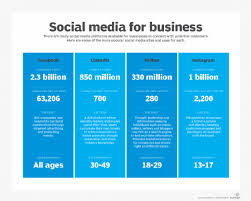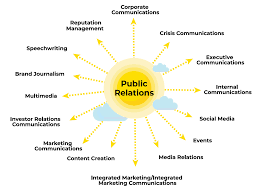Unleashing the Potential: Leveraging Events for Business Success
The Power of Events in Modern Marketing
In today’s digital age, where online marketing dominates the landscape, the power of face-to-face interaction through events remains a vital component of any successful marketing strategy. Events provide a unique opportunity for businesses to engage with their target audience in a more personal and immersive way.
One of the key benefits of hosting events is the ability to create memorable experiences that leave a lasting impression on attendees. Whether it’s a product launch, conference, workshop, or networking event, face-to-face interactions allow businesses to showcase their brand personality, build trust, and establish meaningful connections with their audience.
Events also offer a platform for businesses to demonstrate their expertise and thought leadership within their industry. By hosting informative seminars or panel discussions, companies can position themselves as industry leaders and attract a loyal following of customers who value their knowledge and insights.
Furthermore, events provide an excellent opportunity for businesses to generate leads and drive sales. By engaging with attendees directly and showcasing products or services in a live setting, businesses can create a sense of urgency and excitement that motivates potential customers to take action.
In addition to these benefits, events can also help businesses strengthen relationships with existing customers, partners, and stakeholders. By inviting key stakeholders to exclusive events or networking opportunities, businesses can show appreciation for their support and foster long-term loyalty.
Overall, events play a crucial role in modern marketing strategies by providing a platform for businesses to connect with their audience on a deeper level, showcase their expertise, drive sales, and strengthen relationships. In an increasingly digital world, the power of face-to-face interaction through events remains an invaluable tool for businesses looking to stand out in the competitive marketplace.
Maximising Engagement and Building Trust: The Benefits of Hosting Events
- Opportunity for face-to-face interaction with target audience
- Creates memorable experiences for attendees
- Showcases brand personality and builds trust
- Demonstrates thought leadership within the industry
- Generates leads and drives sales
- Strengthens relationships with customers, partners, and stakeholders
Challenges of Event Organisation: High Costs, Unpredictable Attendance, and Resource Diversion
- Costly to organise and host, requiring budget allocation for venue, catering, marketing, and staff.
- Attendance can be unpredictable, leading to potential low turnout and underwhelming engagement.
- Events require significant time and effort to plan and execute effectively, diverting resources from other marketing initiatives.
Opportunity for face-to-face interaction with target audience
Events provide a valuable opportunity for businesses to engage in face-to-face interaction with their target audience, creating a personal and immersive experience that goes beyond digital communication. This direct engagement allows businesses to build trust, establish meaningful connections, and showcase their brand personality in a way that resonates with attendees on a deeper level. By meeting their audience in person, businesses can gain valuable insights, address concerns, and tailor their messaging to better meet the needs and preferences of their customers, ultimately strengthening relationships and driving long-term loyalty.
Creates memorable experiences for attendees
Hosting events creates memorable experiences for attendees that leave a lasting impact and foster strong connections between businesses and their target audience. Whether it’s a well-executed product launch, an engaging workshop, or an interactive networking event, the opportunity for face-to-face interaction allows attendees to engage with the brand in a personal and immersive way. These memorable experiences not only enhance brand recall but also build trust and loyalty among attendees, making them more likely to become long-term customers and advocates for the business.
Showcases brand personality and builds trust
Hosting events provides a powerful opportunity for businesses to showcase their unique brand personality and build trust with their audience. By creating immersive experiences that reflect the values and ethos of the brand, companies can establish a genuine connection with attendees. Through face-to-face interactions at events, businesses can demonstrate authenticity, transparency, and reliability, which are essential elements in building trust with customers. The personal touch of events allows businesses to humanize their brand and create meaningful relationships that go beyond traditional marketing strategies.
Demonstrates thought leadership within the industry
Hosting events is a powerful way for businesses to demonstrate thought leadership within their industry. By organising informative seminars, panel discussions, or workshops, companies can showcase their expertise, share valuable insights, and position themselves as authoritative voices in their field. This not only helps to build credibility and trust among the audience but also establishes the business as a go-to resource for industry knowledge and innovation. Demonstrating thought leadership through events can set a company apart from competitors and attract a loyal following of customers who value expertise and seek guidance from industry leaders.
Generates leads and drives sales
One significant advantage of hosting events is their ability to generate leads and drive sales. By engaging directly with attendees in a live setting, businesses can create a sense of urgency and excitement around their products or services. Through interactive demonstrations, product showcases, and networking opportunities, events provide a powerful platform for businesses to capture the interest of potential customers and convert leads into sales. The personal touch and immersive experience offered by events often result in higher conversion rates and a tangible impact on the bottom line, making them a valuable tool for driving revenue growth.
Strengthens relationships with customers, partners, and stakeholders
Hosting events is a powerful way to strengthen relationships with customers, partners, and stakeholders. By inviting them to exclusive gatherings or networking opportunities, businesses can show appreciation for their support and engage with them on a more personal level. These face-to-face interactions foster trust, loyalty, and a sense of community, ultimately deepening the connection between the business and its key stakeholders. This proactive approach not only helps in retaining existing relationships but also in building new ones based on mutual understanding and shared experiences.
Costly to organise and host, requiring budget allocation for venue, catering, marketing, and staff.
Hosting events can be a significant challenge due to the high costs involved in organising and hosting them. Businesses need to allocate a substantial budget for various expenses such as securing a suitable venue, catering services, marketing efforts to promote the event, and hiring staff to ensure its smooth execution. The financial investment required for hosting events can be a deterrent for some businesses, especially smaller ones with limited resources, making it essential to carefully plan and strategise to maximise the return on investment from each event.
Attendance can be unpredictable, leading to potential low turnout and underwhelming engagement.
One significant drawback of hosting events is the unpredictability of attendance, which can result in low turnout and underwhelming engagement. Despite efforts to promote the event and generate interest, factors such as scheduling conflicts, competing events, or unforeseen circumstances can impact attendance numbers. This uncertainty can pose challenges for event organisers in terms of budgeting, resource allocation, and overall success of the event. Low turnout not only affects the atmosphere and energy of the event but also diminishes the opportunity for meaningful interactions and engagement with attendees.
Events require significant time and effort to plan and execute effectively, diverting resources from other marketing initiatives.
Organising events can be a double-edged sword for businesses, as they demand a substantial amount of time and effort to plan and execute successfully. This intensive process can often divert valuable resources, both in terms of manpower and budget, from other essential marketing initiatives. The meticulous planning, coordination of logistics, securing of venues, managing vendors, and promoting the event all require careful attention to detail and can place a strain on the overall marketing strategy. As businesses strive to balance their resources effectively, the significant investment in time and effort for events must be weighed against the potential impact on other key marketing activities.












